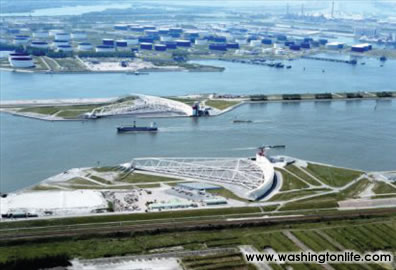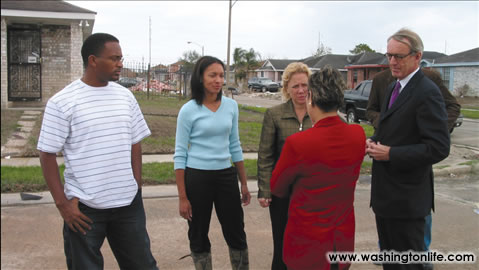DUTCH ON THE DELTALouisiana looks to The Netherlands to fortify its levee system post-Katrina
|
||||||||||||
 |
Some two-thirds of the Netherlands - like much of southern Louisiana - sits at or below sea-level, and thus the two regions have longcooperated on flood control issues. Sending Dutch pumps and engineers to remove flood water from New Orleans last September was simply returning the favor that Louisiana granted Netherlands after our 1953 flood. However, it was also derived from a desire to see if and how my country's world-class water management expertise could help New Orleans, and the U.S. Gulf Coast, return to prosperity. I was privileged enough to tour New Orleans in late November with Senator Mary Landrieu, a number of local officials, and senior officials from the U.S. Army Corps of Engineers. What I saw overwhelmed me - unimaginable devastation, the emptiness of previously thriving communities, a loss of hope and a looming sense of despair. But when I pressed a bit further, dug a bit deeper, I saw an inherent pride in many of the officials and residents who had returned or were planning to return. That pride and resiliency, the love people have for their Crescent City, leaves me with no doubt that New Orleans and the Gulf Coast will be rebuilt, and emerge even more dynamic than before.
Dutch public and private sector officials travel regularly to New Orleans and Baton Rouge, and are always received with the warmest welcome possible. Indeed, in early May the Dutch Foreign Trade Minister visited Louisiana, and met with the Governor, numerous state and local officials, and many leading water policy experts. By chance, she was also in the Louisiana State House and Senate, and was overwhelmed by the reception she received there. She told the legislators that one image indelibly etched into the collective memory of the Netherlands, is that of the U.S. Army helicopters rescuing survivors from their rooftops during the country's 1953 floods. In 1953, the U.S. helped an old friend in Europe, and in 2005, the Netherlands helped an old friend in Louisiana.
We in the Netherlands produce much of our wealth in low-lying areas, and thus, protecting ourselves and our economy is not a choice, but an obligation. So, too, with the Gulf Coast. The question is no longer whether to rebuild, but how to do it wisely. My country has adopted an integrated approach to water management; one that incorporates a deep respect for Mother Nature, while also encouraging government to maximize the synergy between land-use, economic, environmental and other important goals. We have made some mistakes in our water policy, but we have also learned to innovate and adapt with new technology and methods. It is my hope that decision-makers in New Orleans and Louisiana will learn from these mistakes. And it is my firm belief that New Orleans - whose lively culture is derived from the assimilation of so many influences - may even begin to acquire a little bit of Dutch "flavor" as it rebuilds itself into one of the world's great cities.
 |
